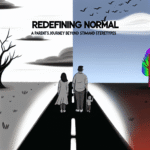Understanding Cognitive Behavioral Therapy: The Essential Comprehensive Guide
Have you ever been caught in an uncontrollable cycle of negative thoughts? You’re not alone. Many individuals struggle with various forms of mental health challenges, from anxiety and depression to stress and phobias. Thankfully, a beacon of hope shines through the fog: Cognitive Behavioral Therapy (CBT). Understanding Cognitive Behavioral Therapy: A Comprehensive Guide is designed to shed light on this transformative therapeutic approach, offering invaluable insights into how it works, its techniques, and the myriad ways it can positively alter your mental landscape. Let’s embark on this journey together to explore the foundational principles of CBT and how it can empower anyone seeking improvement in their emotional wellbeing.
What is Cognitive Behavioral Therapy?
Cognitive Behavioral Therapy is a structured, time-limited psychotherapy that aims to address maladaptive thoughts and behaviors. Developed in the 1960s by psychiatrist Aaron T. Beck, CBT has grown to be one of the most researched and recognized forms of therapy due to its proven effectiveness in treating various mental health issues. At its core, CBT posits that the way you think directly influences how you feel and behave.
The Pillars of CBT: Thoughts, Feelings, and Behaviors
At the heart of CBT lies a simple yet profound model that highlights the relationship between thoughts, feelings, and behaviors. Understanding Cognitive Behavioral Therapy: A Comprehensive Guide revolves around this connection:
- Thoughts: Our cognitive processes can often be distorted, leading to irrational conclusions about ourselves or the world around us.
- Feelings: These thoughts then influence our emotional states, creating a feedback loop that can amplify distress.
- Behaviors: Our responses to these emotions can perpetuate negative patterns, causing us to engage in avoidance or harmful activities.
Table 1: The CBT Triangle
| Component | Description | Example |
|---|---|---|
| Thoughts | Cognitive distortions that affect perception | “I always fail” |
| Feelings | Emotional responses to thoughts | Feeling anxious or sad due to those thoughts |
| Behaviors | Actions taken in response to feelings | Avoiding situations that may cause failure |
Techniques Involved in CBT
Understanding Cognitive Behavioral Therapy: A Comprehensive Guide wouldn’t be complete without exploring the core techniques. Here are some key strategies commonly employed in CBT:
Cognitive Restructuring
Cognitive restructuring involves identifying negative thought patterns to challenge and reshape them into healthier thoughts. This technique helps individuals reevaluate their automatic thoughts and base their beliefs on facts rather than distortions.
Case Study: Sarah’s Journey
Sarah, a 28-year-old teacher, constantly felt overwhelmed by the thought that she was not a good educator. By recognizing this cognitive distortion, her therapist employed cognitive restructuring to help her identify evidence of her competence—such as student feedback and positive evaluations. Over time, Sarah’s confidence in her teaching blossomed.
Behavioral Activation
This technique encourages individuals to engage in activities that promote positive feelings and reward. Often, when we’re feeling down, we withdraw from enjoyable experiences, which then reinforces depression.
Case Study: Mark’s Transformation
Mark, a 35-year-old accountant, struggled with moderate depression. His CBT therapist encouraged him to create a daily schedule filled with enjoyable or fulfilling activities, such as hiking, reading, and connecting with friends. By gradually reintroducing these positive behaviors into his life, Mark experienced a significant lift in his mood.
Exposure Therapy
Used primarily for anxiety disorders, exposure therapy gradually exposes individuals to their fears in a controlled and supportive environment. The goal is to desensitize them and help them develop healthier coping mechanisms.
Case Study: Laura’s Overcoming Fear of Heights
Laura, who suffered from acrophobia (fear of heights), worked with her therapist using gradual exposure techniques. Starting with images of high places and eventually progressing to standing on a tall building, Laura learned to manage her anxiety effectively. Her success showcases the power of confronting fears head-on.
Mindfulness and CBT
Mindfulness practices can complement traditional CBT by teaching individuals to observe their thoughts and feelings without judgment. This approach can create a safe distance from distressing emotions, preventing them from overwhelming the individual.
The Benefits of Cognitive Behavioral Therapy
Understanding Cognitive Behavioral Therapy: A Comprehensive Guide also entails recognizing its myriad benefits. Here are some notable advantages:
- Evidence-Based: CBT is supported by comprehensive research validating its effectiveness across various mental health conditions, including anxiety, depression, PTSD, and obsessive-compulsive disorder.
- Skill Development: CBT equips individuals with practical tools that can be utilized beyond therapy sessions, fostering ongoing self-help and resilience.
- Structured and Goal-Oriented: Many people appreciate CBT’s focus on setting well-defined goals, facilitating a clear path for progress.
- Short-Term Treatment: Many clients experience positive results within a limited number of sessions (often 10-20), making it a time-efficient therapeutic choice.
Table 2: Conditions Treated by CBT
| Condition | Effectiveness |
|---|---|
| Generalized Anxiety Disorder | High effectiveness |
| Major Depressive Disorder | Highly effective |
| Obsessive-Compulsive Disorder | Effective |
| Post-Traumatic Stress Disorder | Moderately effective |
| Phobias | High effectiveness |
Who Can Benefit from CBT?
The beauty of Understanding Cognitive Behavioral Therapy: A Comprehensive Guide lies in its broad applicability. People from all walks of life can benefit from CBT, including:
- Individuals suffering from various mental health disorders: Those dealing with anxiety, depression, and more can find relief through CBT.
- Individuals seeking personal growth: CBT is beneficial for anyone interested in reducing self-doubt or improving resilience.
- Parents and caregivers: Understanding your cognitive distortions can improve your relationships and provide better support for loved ones.
Overcoming Potential Obstacles
While CBT offers compelling benefits, some individuals may face challenges during the therapeutic journey. Here are common concerns and strategies to address them:
1. Stigma Around Therapy
Concern: Fear of judgment for seeking help.
Solution: Remind yourself that seeking help is a sign of strength, and many individuals attend therapy as part of a personal development plan.
2. Difficulty in Identifying Thoughts
Concern: Trouble understanding your cognitive distortions.
Solution: Utilize journaling as a tool to reflect on daily thoughts, patterns, and feelings.
3. Reluctance to Change Patterns
Concern: Resistance to changing established thought patterns.
Solution: Discuss these fears openly with your therapist; the therapeutic process considers your comfort level.
4. Expecting Immediate Results
Concern: Wanting to see rapid changes in mental health.
Solution: Remember that meaningful change takes time; celebrate small victories along the way.
5. Coping with Challenges Outside Therapy
Concern: Struggles with new techniques in real-world situations.
Solution: Role-play different scenarios during therapy sessions to practice these strategies effectively.
Conclusion
Understanding Cognitive Behavioral Therapy: A Comprehensive Guide equips you with the knowledge to take control of your mental health journey. Embracing the principles and techniques of CBT can transform your relationship with your thoughts and feelings, allowing you to lead a more fulfilling life. Whether you seek therapy for a specific issue or strive for personal growth, remember: Real change begins with your willingness to challenge and reshape your thought patterns. The first step towards a positive transformation is just around the corner.
FAQs
What Are the 5 Components of Cognitive Behavioral Therapy?
Understanding Cognitive Behavioral Therapy involves recognizing its core components, which guide the therapeutic process. These five components include:
- Identification of Negative Thoughts: Clients learn to spot automatic negative thoughts that contribute to emotional distress.
- Cognitive Restructuring: Techniques are used to challenge and replace distorted thinking patterns with balanced ones.
- Behavioral Activation: This encourages engagement in positive activities to combat avoidance and inactivity.
- Skill Training: Practical skills like problem-solving, assertiveness, and stress management are taught.
- Relapse Prevention: Clients develop strategies to maintain progress and manage future challenges.
For a deeper dive into these concepts, check out this guide on CBT.
What Is the Basic Understanding of CBT?
At its core, CBT focuses on the interplay between thoughts, emotions, and behaviors. Understanding Cognitive Behavioral Therapy involves grasping its foundational principles:
- Cognition Drives Behavior: Thoughts influence feelings and actions.
- Behavior Affects Emotions: Engaging in specific behaviors can modify emotional states.
- Focus on Present Issues: CBT targets current problems rather than delving deeply into the past.
CBT is a structured, goal-oriented approach often used to treat depression, anxiety, and other mental health conditions. For an accessible introduction, explore related content here.
What Are the 5 Stages of CBT?
The stages of CBT provide a roadmap for effective therapy. Understanding Cognitive Behavioral Therapy through its stages involves:
- Assessment: Gathering information about the client’s challenges and goals.
- Education: Teaching clients the principles of CBT and their role in the therapeutic process.
- Skill Development: Equipping clients with tools to manage their thoughts and behaviors.
- Application: Practicing new skills in real-life scenarios to reinforce learning.
- Evaluation and Termination: Reviewing progress and planning for future self-reliance.
Discover how these stages apply in therapy by visiting this article.
What Are the 3 C’s of Cognitive Behavioral Therapy?
The “3 C’s” of CBT are simple steps to practice in daily life. They are:
- Catch: Recognize negative or unhelpful thoughts as they occur.
- Check: Evaluate the accuracy of these thoughts, identifying distortions or biases.
- Change: Shift to a more balanced and constructive perspective.
Understanding Cognitive Behavioral Therapy through the 3 C’s emphasizes the active role individuals play in transforming their mental habits. For further insights, read about CBT techniques here.
By delving into the principles of Cognitive Behavioral Therapy, you can unlock the door to emotional resilience and personal empowerment. Remember, the journey of a thousand miles begins with a single step—take that step today.
















